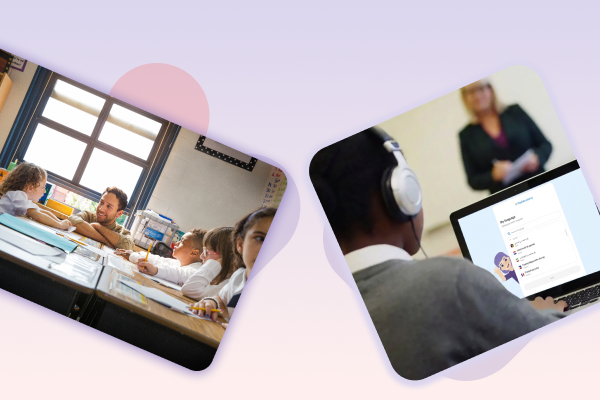

As it’s National Share-A-Story month here in the UK and with half-term around the corner, now is an ideal time to encourage pupils to get their creative juices flowing with story writing and story telling activities. Rather than simply giving pupils a topic and asking them to write a story, the following activity adds a level of much-needed peer interaction at a time when this is greatly reduced.
Step 1
Start by giving pupils a list of types of words they need to choose, such as three adjectives, three verbs, three jobs, three common nouns, etc. You can base these categories around topics you have covered. Ask pupils to try to make the words they use as varied and interesting as they can. As an example, you can explain that ‘go, do, play’ are too boring and that the more interesting the vocabulary is, the more difficult the task becomes for other pupils in the next step!
Step 2
Once pupils have compiled their lists of vocabulary and sent them to you, re-distribute them to different pupils. Their challenge is now to use this varied vocabulary to write a story. Hopefully, there will be some new vocabulary that pupils will have to research in order to incorporate it. You can provide sentence starters or suggested language for storytelling as support.

Step 3
Once pupils have written their stories, ask them to practise telling the story out loud with expression. If you are having live lessons, they can tell each other their stories ‘in person’; if not, they can record the audio and send to you for feedback.
Step 4
Add an element of peer feedback. Ask pupils to refer back to the list of vocabulary they originally provided and listen to their classmate’s story to check that they have used all the vocabulary. You can also set up peer feedback by asking pupils their criteria for a ‘good story’, whether that’s grammatical accuracy, structure or entertainment value, and encourage them to give feedback commenting on those areas.

This activity can be adjusted for lower levels of English proficiency, perhaps by reducing the number of words they are required to include, varying your expectations of how interesting you expect the vocabulary to be or focusing on a particular tense. For younger pupils, you could ask them to make comics or mini-books of their stories. This activity can be carried out with pupils working individually or in pairs/groups, depending on what available technology will allow.
For more story-writing activities, why not download our free Creative Story Writing pack, or you can explore our wide range of free home learning resources here.
You may also like to know that The Federation of Children’s Book Groups is currently running a story-writing competition for pupils aged 9 to 12 years old. The deadline is at the end of June so there is plenty of time for you to support your EAL pupils to enter! The theme for this year is ‘home’, so the perspective of EAL pupils is particularly valuable and they may have some poignant thoughts and stories to share on what ‘home’ means to them. http://fcbg.org.uk/national-share-a-story-month/

